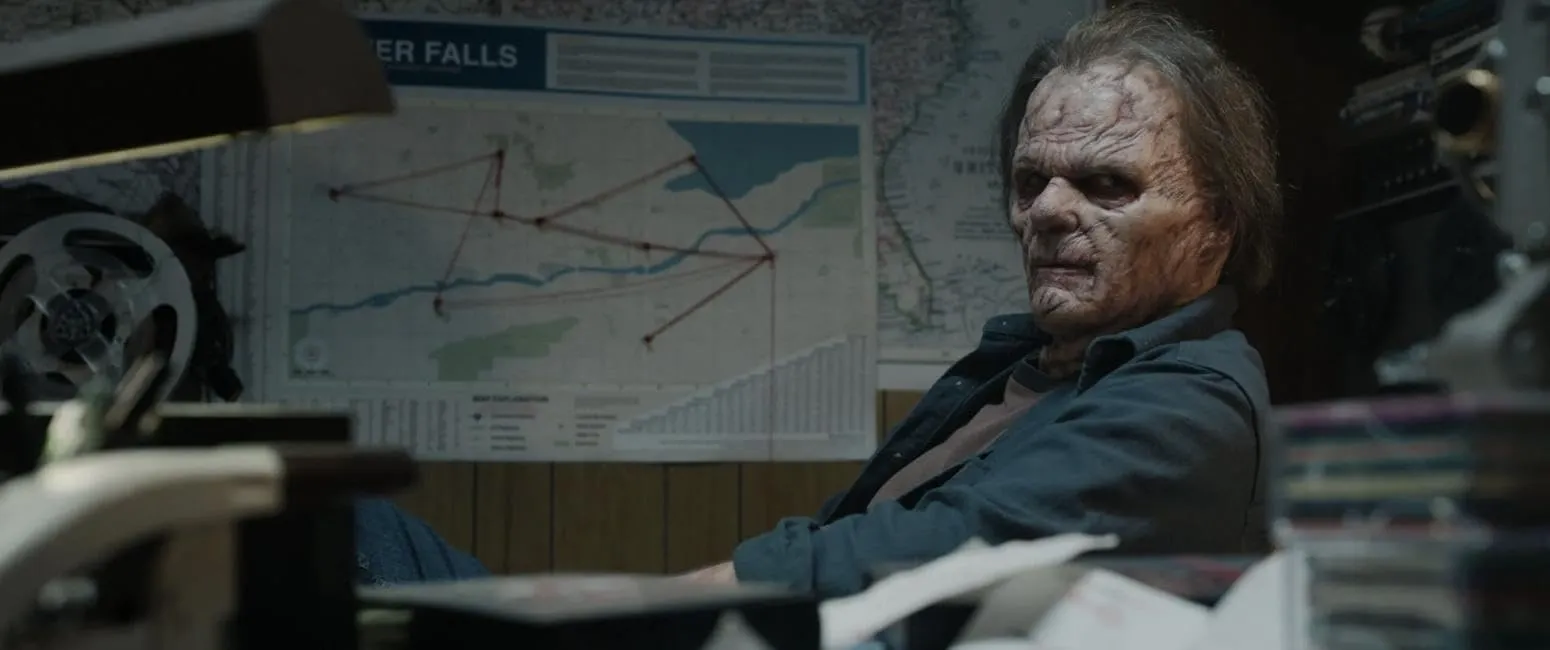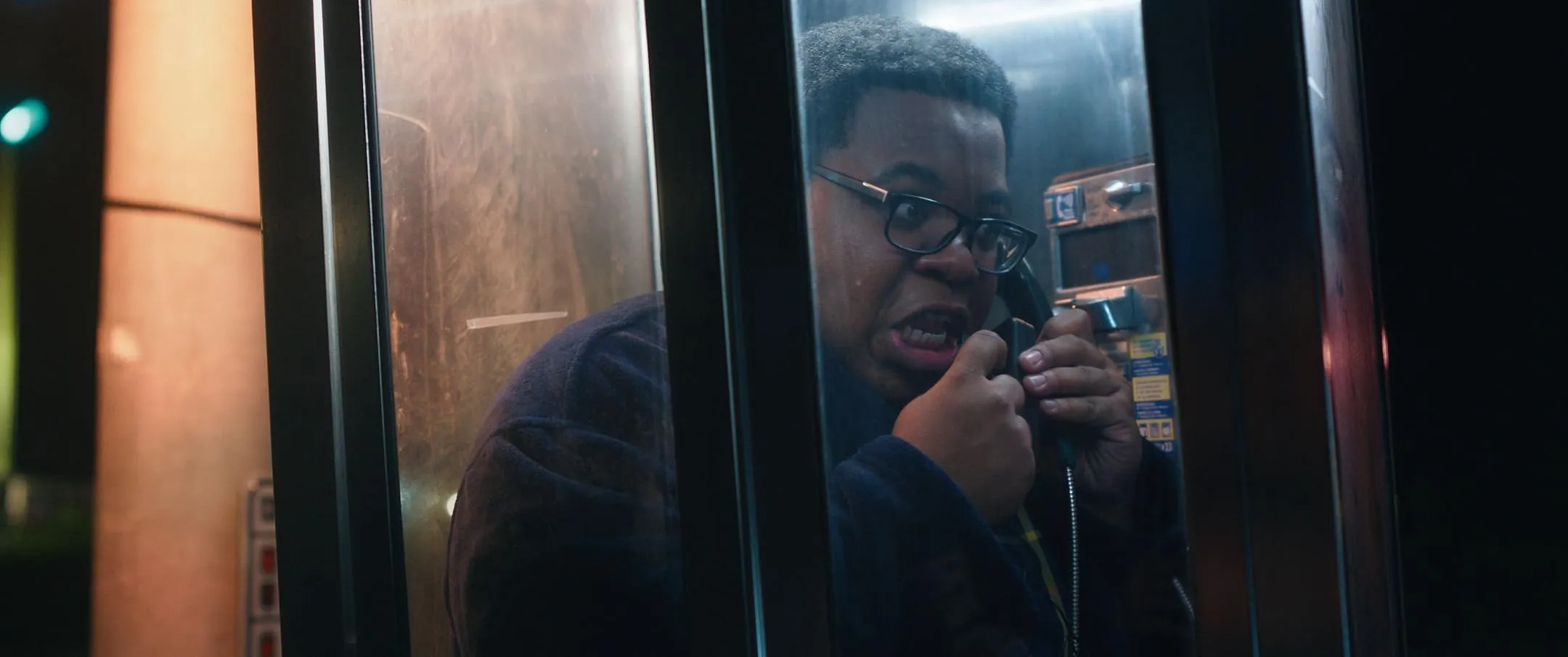The film opens with a mix of slasher horror, dark comedy, and a coming-of-age story that centers on Abbie Bladecut, a young woman who finds herself drawn into a grim family business. Abbie must face a legacy marked by bloodshed and mystery as she takes on a role that has been passed down through generations.
The narrative presents a tale where the macabre and the humorous intersect in unexpected ways, inviting the audience to follow Abbie’s progression as she negotiates her everyday challenges with the weight of her unusual heritage.
Set in the small town of Clover Falls, styled with an ’80s aesthetic, the setting acts as a critical element in the storytelling.
The local video store plays a pivotal role in the film, serving as both a stage for the unfolding drama and a symbol of a bygone era of horror and home video culture. The film pays homage to classic slasher movies and the era of VHS, capturing the spirit of the period through its visuals and atmosphere.
This background provides a rich environment that shapes the film’s narrative, giving viewers a sense of place that enhances the unusual story at its center.
Storytelling Dynamics and Flow
Abbie’s evolution from an uncertain high school student to someone who reluctantly assumes her family’s notorious work is presented through a series of notable turning points. The film starts with everyday school life, where hints of her hidden background emerge slowly, before shifting toward scenes that reveal the heavy load of family expectations.
Specific moments, such as when Abbie steps up during a critical family decision, serve to mark her growing involvement. These scenes create a rhythm that keeps the viewer engaged while the pace steadily accelerates as she becomes increasingly tied to the family trade.
The film uses humorous set pieces and surprising narrative shifts to keep the viewer alert. There are sequences where unexpected elements, like the mysterious method for selecting victims from a school yearbook, catch the audience off guard. This approach turns ordinary events into startling moments, making each twist feel like a spark in a dark scene.
The use of self-aware commentary throughout the film also points to well-known horror traditions, which the narrative acknowledges and twists in new ways. This adds a layer of cleverness that invites viewers to consider familiar scenes from a different angle.
The screenplay maintains a steady flow by interspersing dramatic horror moments with lighter, more personal high school encounters. Voiceovers and well-timed flashbacks contribute details about Abbie’s past that enrich her present challenges.
The film manages to keep its tone balanced, ensuring that even the more suspenseful or shocking scenes do not overwhelm the personal story. The deliberate arrangement of key events helps to build tension while also providing moments of clarity regarding the character’s struggles.
This careful organization of scenes allows the audience to follow the shifting focus without losing track of the character’s internal conflicts, leaving room for further thought on how individual moments in a narrative can shape emotional experiences.
Character Complexity and Interactions
Abbie is portrayed as a young person caught between everyday school challenges and a shadowed family vocation. Her awkward nature comes through in moments of hesitation when she faces situations that push her to assume responsibilities she never imagined.
At times, her eyes reveal the weight of conflicting desires—wanting a normal social life while the dark family trade beckons her forward. Early scenes capture her uncertainty as she navigates social gatherings at school, contrasted sharply with the grim tasks that gradually define her life.
Specific instances, such as her reluctant acceptance of a key family ritual, mark the turning point in her evolution. These scenes uncover her inner struggles as she weighs personal morals against the legacy she inherits.
Roger’s character is sketched with layers that mix menace with tender concern. His actions as a serial killer carry the cold precision expected of a horror icon, yet his expressions and quiet moments hint at inner conflict.
The rigid code he enforces around the family trade sets the stage for tension, especially when his instructions clash with Abbie’s emerging doubts. His stern demeanor and calculated approach provide a stark backdrop for Abbie’s gradual push for independence.
The film captures moments where his normally unyielding nature softens, suggesting personal regrets and hidden vulnerabilities that complicate his role.
Sam plays a crucial part in sparking Abbie’s self-discovery, acting as both a friend and a mirror to her emerging self-awareness.
The other characters populating Abbie’s school and hometown are sketched with distinct quirks that add a touch of levity amid the film’s darker episodes.
Their interactions bring forward humorous exchanges and moments of tension that mirror the unpredictability of teenage life.
Each secondary character adds their own shade to the overall portrait of a community caught between normalcy and an unexpected call to violence, enriching the narrative with a mix of levity and seriousness that keeps the viewer engaged.
Hidden Narratives and Social Echoes
The film centers on the tension of being born into a violent heritage, captured in Abbie’s struggle with her place in the Bladecut lineage. Abbie finds herself at a crossroads where the weight of hereditary expectations clashes with her personal sense of self.
This internal tug-of-war is painted with vivid scenes that show her hesitation when accepting family traditions marked by gruesome rituals. The narrative takes care to highlight how the Bladecut name carries a legacy of grim duty that leaves little room for individuality.
Gender expectations also surface, as Abbie’s determination to redefine her role within a world historically dominated by male figures brings forward questions about self-definition and social order.
Abbie’s transformation is shown through her gradual acceptance of responsibility amid an environment that oscillates between everyday school life and eerie, macabre tasks.
Moments of budding friendship and tender romance emerge in contrast to the dark practices she inherits. The film presents her everyday experiences as a testing ground for her personal growth, where every interaction and decision is tinted by the shadow of her family trade.
Her encounters serve as benchmarks that track her shifting beliefs and emotional responses, offering a clear view of a young person learning to balance vulnerability with the demands of a grim vocation.
The work also injects playful nods to familiar horror formulas, setting a tone that questions the expected narrative conventions. Instances such as the quirky method of victim selection through a school yearbook provide a momentary pause from the narrative’s heavier themes.
These scenes carry a wink to audiences familiar with classic slasher elements, yet they reframe the familiar in a way that sparks fresh thought about what the genre can offer.
This layering of dark humor with unsettling themes opens up questions about the limits of genre storytelling and invites a closer look at how familiar motifs can be repurposed.
Cinematic Techniques and Genre Hybridization
The film presents a set of visuals that evoke the look of vintage horror. Practical gore effects give the viewer a palpable sense of terror, supported by period-specific cinematography and well-constructed set design.
Each kill sequence is arranged with careful attention, and makeup application accentuates the shock factor with a sense of realism reminiscent of classic horror films.
The narrative shifts seamlessly between macabre humor and stark, unsettling violence. Scenes transition from moments of grim intensity to sequences that capture everyday teenage life, all set against a backdrop of eerie tension.
The pacing holds the viewer’s attention by alternating between deliberate, suspenseful builds and bursts of rapid action.
The director makes clear choices that emphasize the ironic nature of a storyline caught between horror and everyday experiences, allowing the absurdity of the premise to shine without diminishing the emotional impact.
A carefully curated musical score intensifies both suspenseful and humorous moments, shaping an audio atmosphere that aligns with the film’s period feel.
Thoughtful sound design adds depth to each scene, with standout tracks accentuating key dramatic moments. Each audio cue works in tandem with the visual elements, crafting a soundscape that enhances the film’s distinct approach to reviving classic horror sensibilities.
This blend of tangible effects, precise audio cues, and thoughtful pacing raises questions about the ways traditional horror methods can be reinterpreted in a setting that challenges expectations.
Constructing a Distinct Locale and Mood
The film creates a setting that stands apart through its careful attention to a small town steeped in character. Clover Falls emerges as a quiet community where everyday routines meet unsettling events, generating a mood that is both eerie and lightly amusing.
The town’s modest architecture and familiar public spaces contrast sharply with the secretive operations that unravel under its surface. This setting, while simple in its depiction, injects a sense of isolation and tension that guides the viewer through the narrative.
A notable element is the homage to the ’80s VHS culture, with the video store serving as a critical focal point. This establishment functions as a space where tangible history and symbolic storytelling merge.
It acts as a stage where past influences and modern twists coexist, marking the film with an unmistakable nod to a bygone era. The presence of retro technology and period-specific memorabilia deepens the connection to that time, enriching the story with a layer of cultural memory.
The visual design reinforces this textured backdrop through deliberate production choices. Costumes, props, and carefully constructed sets evoke a sense of authenticity that roots the narrative in its intended era.
Lighting and color choices craft a visual signature that is memorable, ensuring that scenes carry both the feel of a nostalgic period and a subtle, unsettling edge.
Each design decision draws the viewer deeper into the film’s crafted environment, prompting reflection on how familiar settings can transform under unusual circumstances and leave a lasting impression on the audience.
Lasting Impressions and Cultural Echoes
The film mixes slasher horror, dark comedy, and a coming-of-age tale into a narrative that follows Abbie as she faces a legacy built on grim family customs and everyday teenage dilemmas.
Her gradual evolution appears through carefully placed moments of tension and playful mischief. Character interactions and measured pacing sustain a mood that shifts between sharp anxiety and unexpected levity.
This work sits in an interesting space within its genre, challenging typical horror formulas with inventive twists and smart storytelling choices. It invites viewers to reconsider how familiar horror motifs can be reinterpreted with fresh narrative decisions and heartfelt character arcs.
The film’s influence might echo in projects from smaller circles, prompting discussion on how such experiments change expectations in horror cinema. One is left to ponder how a tale that reshapes known conventions may inspire future narratives that merge wit and deep emotional tone.
The Review
Bloody Axe Wound
Bloody Axe Wound delivers a surprising mix of horror, dark comedy, and a coming-of-age tale. It reinterprets classic slasher elements with self-aware humor and solid character development. Moments of uneven pacing and narrative quirks may challenge some viewers, yet memorable performances and inventive twists shine through. It stands out as a cult pick for fans seeking fresh takes in horror.
PROS
- Memorable character arcs
- Inventive twists on slasher tropes
CONS
- Occasional uneven pacing
- Some narrative elements feel underdeveloped





















































